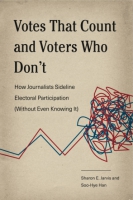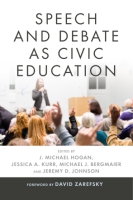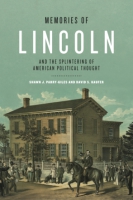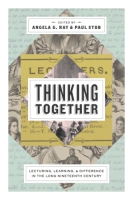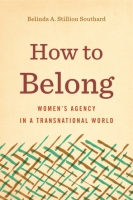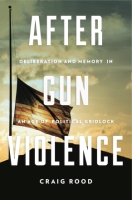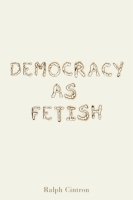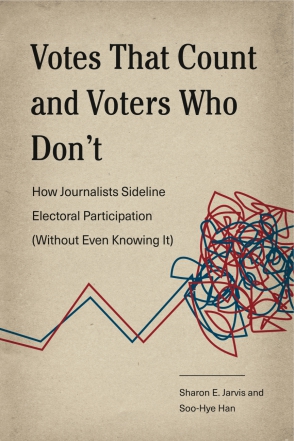
Votes That Count and Voters Who Don’t
How Journalists Sideline Electoral Participation (Without Even Knowing It)
Sharon E. Jarvis and Soo-Hye Han
Votes That Count and Voters Who Don’t
How Journalists Sideline Electoral Participation (Without Even Knowing It)
Sharon E. Jarvis and Soo-Hye Han
Winner of the 2019 Political Communication Division Roderick P Hart Outstanding Book Award from the National Communication Association“Why are reporters constantly tempted to predict—or even to declare—election results before people even vote? In this fascinating book, Jarvis and Han identify a growing attitude of dismissiveness that echoes academic research on easily manipulated citizens and reinforces the public’s cynicism about democracy. They show that this condescension has serious consequences. The authors’ analytical rigor is matched by their respect and concern for everyday people: a rare and worthy combination.”
- Description
- Reviews
- Bio
- Table of Contents
- Sample Chapters
- Subjects
Jarvis and Han track how journalists have told the story of electoral participation during the last eighteen presidential elections, revealing how the portrayal of voters in the popular press has evolved over the last half century from that of mobilized partisan actors vital to electoral outcomes to that of pawns of political elites and captives of a flawed electoral system. The authors engage with experiments and focus groups to reveal the effects that these portrayals have on voters and share their findings in interviews with prominent journalists
. Votes That Count and Voters Who Don’t not only explores the failings of the media but also shows how the story of electoral participation might be told in ways that support both democratic and journalistic values.At a time when professional strategists are pressuring journalists to provide favorable coverage for their causes and candidates, this book invites academics, organizations, the press, and citizens alike to advocate for the voter’s place in the n
ews.“Why are reporters constantly tempted to predict—or even to declare—election results before people even vote? In this fascinating book, Jarvis and Han identify a growing attitude of dismissiveness that echoes academic research on easily manipulated citizens and reinforces the public’s cynicism about democracy. They show that this condescension has serious consequences. The authors’ analytical rigor is matched by their respect and concern for everyday people: a rare and worthy combination.”
“Jarvis and Han report that American journalists over six decades have inadvertently put campaign strategists in the driver’s seat and rendered voters as mere passengers. Moreover, campaign journalists were surprised that their concern for debunking strategists had undermined their attention to voters as active participants. Citizens disliked stories treating them as spectators and preferred stories treating then as empowered participants. This book offers important insights and a pathway toward improved campaign journalism and voting.”
“Votes that Count and Voters Who Don’t offers a rich understanding of how the language of news reports on presidential elections often impacts voter participation and turnout negatively. The centerpiece of this analysis is a nuanced content analysis of the trends in the appearance of three key words--vote, voter, and voting--in news reports across a sixty-eight-year period. Supplemented by experimental data and interviews with journalists, these results identify ways that news reports can enhance participation in elections.”
“Votes That Count and Voters Who Don’t will be invaluable reading for scholars, journalists, and citizens who care about elections—not just about who wins them, or the microscopic analysis of voting behavior, but about the fundamental exercise of power that elections represent. Jarvis and Han show us how it matters when journalists portray voters as those who are acted upon rather than as empowered democratic actors.”
“Provocative just in its title alone, Sharon E. Jarvis and Soo-Hye Han’s Votes That Count and Voters Who Don’t: How Journalists Sideline Electoral Participation (Without Even Knowing It) is more insightful than the usual complaints about American politics devolving into a horse race in an echo chamber.”
“Perhaps the book’s triumph is that it makes it more difficult to look at members of the media as elite, but simply as contrite in the face of their apparent role in an election process that appears to have left the voter behind.”
Edward Jarvis is Fellow of the Royal Asiatic Society and the Royal Anthropological Institute. He is the author of Sede Vacante: The Life and Legacy of Archbishop Thục and Carlos Duarte Costa: Testament of a Socialist Bishop.
Contents
AcknowledgmentsIntroduction: Journalists and Voters1 Portraying the Voter2 Discounting the Voter3 Positioning the Voter4 Influencing the Voter5 Struggling with the Voter6. Spinning for the VoterAppendixNotesIndex
From the Introduction
Journalists and VotersOn November 2, 1948, over 47 million Americans voted in their country’s forty-first quadrennial presidential election. The Chicago Tribune did not wait for these votes to be tallied, however, before naming Republican Thomas Dewey the winner. Facing deadline pressures, and convinced by pre-election polling numbers, veteran reporter and political analyst Arthur Sears Henning called the election for this Chicago paper before the polls had even closed on the East Coast. Consequently, the next day’s print edition featured the infamous—and incorrect—headline: “Dewey Defeats Truman.” When the votes were actually counted, the Democratic nominee Harry Truman received 2,188,055 more votes than Dewey (giving him an Electoral College edge of 303 to Dewey’s 198). While this incident is renowned for several reasons—Truman’s victory surprised the campaign and media elite, Henning’s forecast put the practice of public opinion polling into question, and AP photographer Byron Rollins’s iconic photo of a victorious Truman holding an early edition of the faulty front page became seared into the public memory—this book is concerned with a more fundamental element of the event. What led an esteemed journalist to write the conclusion to the campaign narrative before the election was even over?As it turns out, Henning’s rush to do so has not been unique. A review of election reporting practices reveals a set of similarly hurried efforts to record history before it has happened. In 1964, for instance, even though over 70 million Americans voted in the presidential election, news stations on the East Coast began discussing Democrat Lyndon B. Johnson’s lead in the race well before polls had closed on the West Coast. While Johnson went on to win 61 percent of the popular vote, media outlets talked openly about his likely victory hours before all votes were cast. In 1980, even though over 86 million Americans voted in the presidential election, NBC called the contest for Republican Ronald Reagan at 8:15 p.m. EST. This action led incumbent president Jimmy Carter to deliver his concession speech 90 minutes later—well before the polls had closed in Western States. In 2000, even though over 6 million Floridians voted in the presidential election, Democrat Al Gore was declared the winner of the state at 7:49 p.m. by NBC, at 7:50 p.m. by CBS, at 7:52 p.m. by the Voter News Service, and at 8:02 p.m. by ABC. These calls were retracted at 10:00 p.m. by CBS and at 10:16 p.m. by the Voter News Service. Republican George W. Bush was then named the winner in Florida at 2:16 a.m. by FOX and at 2:20 a.m. by ABC, only for these pronouncements to also be rescinded hours later. It would take more than a month for the courts to settle on the winner of the election in Florida in that year.In the spring of 2016, an early call was made on the eve of the last major day of the Democratic primary. The Associated Press ran a story—just before delegate-rich states like California and New Jersey could vote—declaring that Hillary Clinton had enough support to become the Democratic nominee. This announcement prompted a wave of responses. Clinton herself tweeted, “We’re flattered, @AP, but we’ve got primaries to win. CA, MT, NM, MD, NJ, SD, vote tomorrow!” News reports featured citizens’ concerns with the call. Travis Fox was quoted as saying, “Disgusting. Absolutely horrible to hear.” Jacob Chase offered, “How can you call this on the eve of the California primary? The media is trying to suppress the vote, and they’re trying to anoint her. They’re doing an anointment process.” Isabelle Saenz added, “It makes no sense. We haven’t even voted yet. It’s not fair—California is the biggest state.”In the months leading up to the 2016 election, prominent voices in the media continued to foretell successes for Clinton. A Donald Trump victory was labeled “a fantasy” as media elites suggested “it would take video evidence of a smiling Hillary drowning a litter of puppies while terrorists surrounded her with chants of ‘Death to America’” for him to win. Data analysts and reporters offered to eat crickets on CNN as well as printouts of their Washington Post columns should Trump be victorious. On Election Day, the New York Times shared that “Hillary Clinton has an 85% chance to win,” noting that “a victory by Mr. Trump remains possible,” but “Mrs. Clinton’s chance of losing is about the same as the probability that an N.F.L kicker misses a 37-yard field goal.” According to Politico, “even Trump has admitted that, on the morning of November 8, he didn’t think he was going to win.”America has witnessed considerable political, cultural, and technological changes in the sixty-eight-year span between the Dewey headline, the Florida fiasco, and the Clinton projections. A constant over these years, however, can be witnessed in journalists’ instinct to call elections before the votes have been tallied. In the contests above, millions of citizens turned out to perform their democratic duty. And, in these cases, the media would not wait for their decisions to be counted. These early election calls raise key questions: How have journalists told the story of electoral participation during presidential campaigns? How have they signaled the value of the vote, the role(s) of voters, and the act of voting? Have they depicted participation as meaningful and worthwhile? Or have they described it as preordained and a waste of time? Heading into Election Day, has the electorate been cued as central, or superfluous, to democratic life?These questions have a special urgency in the United States—a country with a history of ambivalence about electoral participation. On one hand, voting is a key symbol of American democracy, a venerated privilege for generations. On the other, there is no affirmative right to vote in the U.S. Constitution as the nation’s Founders were uncomfortable with the idea of suffrage. Interestingly, at least 135 subsequent democracies whose founding documents were written after the U.S. Constitution was ratified, including neighbors Canada and Mexico, explicitly guarantee the right to vote to their citizenry. That the United States continues to have “Constitutional silence” on the right to vote places it in a small group of countries such as Azerbaijan, Chechnya, Indonesia, Iran, Iraq, Jordan, Libya, Pakistan, Singapore, and the United Kingdom, prompting the Brennan Center for Justice to label the United States “backward” on this issue. Additionally, the United States is one of the rare countries that places the responsibility for registration entirely on the voter. While between the years 2015 and 2016, states including California, Connecticut, Oregon, Vermont, and West Virginia authorized automatic voter registration for citizens interacting with their state Department of Motor Vehicles offices, comparative research shows that the United States trails other countries in this practice. In commenting on such matters, Walter Dean Burnham observes how “in all other advanced capitalist democracies, it has for generations been a first principle that the right to vote is a fundamental human and political right and that it is the duty of the state to protect and facilitate its exercise.” He continues, “The administrative hurdles, incompetencies and inadequate funding” allocated to conducting elections “would not be allowed to exist in any country which viewed the political rights of the citizenry as of fundamental importance and mobilized the resources of the state accordingly.”Seminal works in political science have attended to how elite actors, powerful institutions, and scholars in the United States view voting. In his 1966 book The Responsible Electorate, V. O. Key worried that the picture of the voter emerging in “the new electoral studies,” contributing to “political folklore,” and “being spread to a larger public by reporters” was not pretty. Survey research findings like those published in the influential 1960 book—The American Voter— or those used by “public-relations” consultants to advise candidates, he feared, were being interpreted and acted upon in ways that cast voters as “fools” who could be “managed by campaigns” rather than as “citizens” charged with the role of “making and unmaking governments.” He saw such a mindset as problematic, for it could shape how people see their roles in the polity and influence how leaders and the government treat them. Employing the metaphor of an “echo chamber” to refer to the public mindset, he wrote, The perceptions that leadership elements of democracies hold of the modes of response of the electorate must always be a matter of fundamental significance. Those perceptions determine the nature of the voice of the people, for they determine the character of the Echo Chamber. While the output may be governed by the nature of the input, over the longer run the properties of the Echo Chamber may themselves be altered. Fed a steady diet of buncombe, the people may come to expect and respond with highest predictability to buncombe. And those leaders most skilled in the propagation of buncombe may gain lasting advantage in the recurring struggles for popular favor.In his 1968 book Elections in America, Gerald Pomper was also apprehensive about the “pessimistic portrait of the voter” emanating from analyses of survey data in the 1960s. Like Key, he was uneasy that scholarship had begun to “ridicule the electorate,” potentially portending a research trajectory that could become a “self-fulfilling prophecy.” He discussed how survey findings were elucidated in ways that treated voters not as participants in the democratic process but as “susceptible to manipulation by socioeconomic influences, propaganda, and glamorous candidates.” In interpreting his own research from the 1964 election, he hesitated to regard voters as either “philosophical citizens” contributing “direct popular control over policy” or as “manipulated subjects” offering “no direct or indirect influence.” Instead, he argued that voters could be seen as individuals who protect themselves and their interests by participating in elections and by controlling who is elected. Failing to be mindful of how elections offer citizens opportunities to protect themselves, he cautioned, might lead to actions that could “minimize the power of ordinary citizens” by “restricting their roles in elections” for “if elections are not respected, they could become unworthy of respect.”Similar concerns have been voiced more recently. In his 2013 book drawing on data from Great Britain, Stephen Coleman addressed how “there is a sense in which the act of voting as described in most election studies is stripped of its cultural vitality, leaving the individual voters as a disembodied cog in a vast political counting machine.” In a 2001 review of the state of election research, Larry Bartels noted that the subjection of the electorate to “microscopic analysis”—a trend that had grown steadily in prominence since the early 1960s—tends to make electoral study a “nonpolitical endeavor.” This development troubled him as it “divorces the subjects of microscopic examination” from their place in the larger political situation and means that many academic studies of voting do not “add impressively to our comprehension of the awesome process by which the community or nation makes decisions at the ballot box.” For Bartels, a “key intellectual challenge facing scholars of voting” is to take a step back and pay more attention to the power and place of elections in a political system more broadly.A tradition of ambivalence and these scholarly concerns take us back to the uneasy relationship between reporters and voters evidenced in the examples that opened this chapter. From a grand perspective, proclamations about the democratic duty of journalists abound. As Buzz Merritt and Maxwell McCombs put it, all journalists have “a stake in the condition of citizenship because we have a stake, both personal and professional, in the condition of democracy.” If, they continue, news professionals “cannot figure out how to play an effective role in the interrelated dynamic of journalism and democracy, neither will flourish.” From a more practical vantage point, news professionals face pressures—particularly for television and digital sites—to be first with the facts. Howard Kurtz, media writer for the Washington Post, contends, “The pace has gotten dizzying for me and my colleagues. . . . everyone wants it now, now, now. And that’s understandable in a wired world, but the sacrifice clearly is in the extra phone calls and the chance to briefly reflect on the story that you’re slapping together.” Here, the competing goals of getting the facts right versus getting the facts first complicate reporting on elections.To date, analyses of how these temporal pressures influence the story of voting have taken an outcomes-based approach. Specifically, scholars have examined if and how premature announcements affect voter turnout and electoral results. Such analyses have revealed how in 1964, “the number of vote changes among voters who heard election returns before voting was not very large,” and in 1980, no evidence was found to “support the belief that early projections significantly depress voter turnout.” While these findings offer understandings of the effects of rushed calls in two lopsided contests (Johnson and Reagan won by wide margins in those years), Kurt and Gladys Lang warn how such studies neglect how early calls could influence a broader sense of respect for voting in general. They believed that “a failure to locate a significant number of vote changes in 1964 does not mean that more such changes cannot occur under different circumstances.” Because “no two elections are exactly alike” they continue, the “matter of regulating the dissemination of returns on Election Day should be debated less in terms of the number of voters affected than in terms of the impact on the legitimacy of the electoral process.”[Excerpt ends here.]
Mailing List
Subscribe to our mailing list and be notified about new titles, journals and catalogs.
